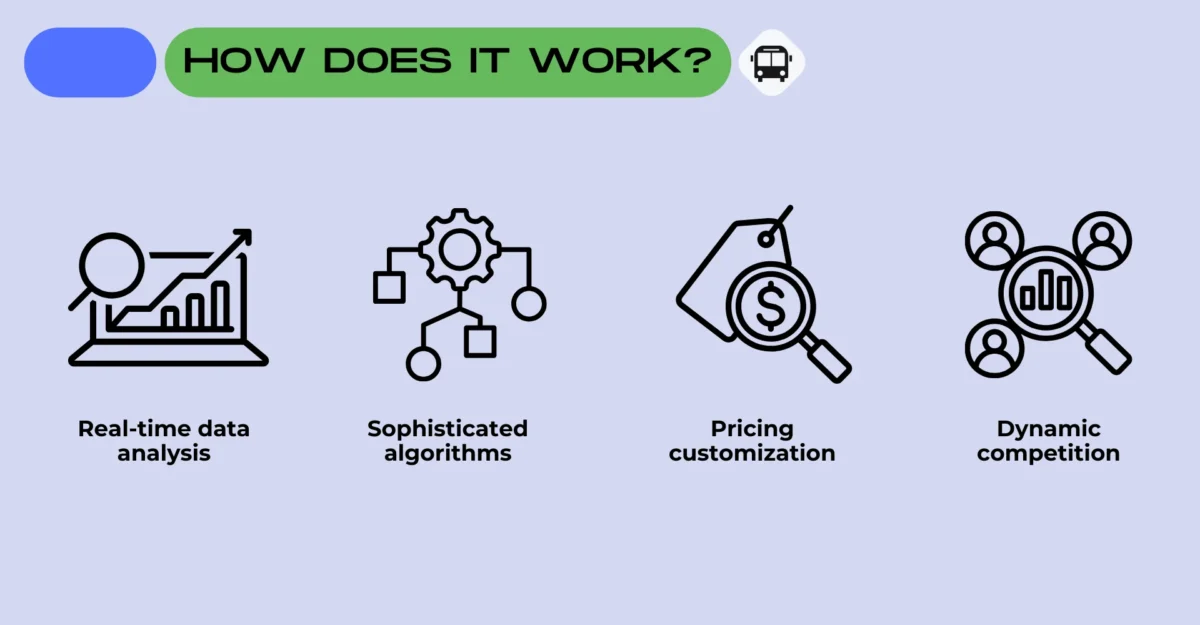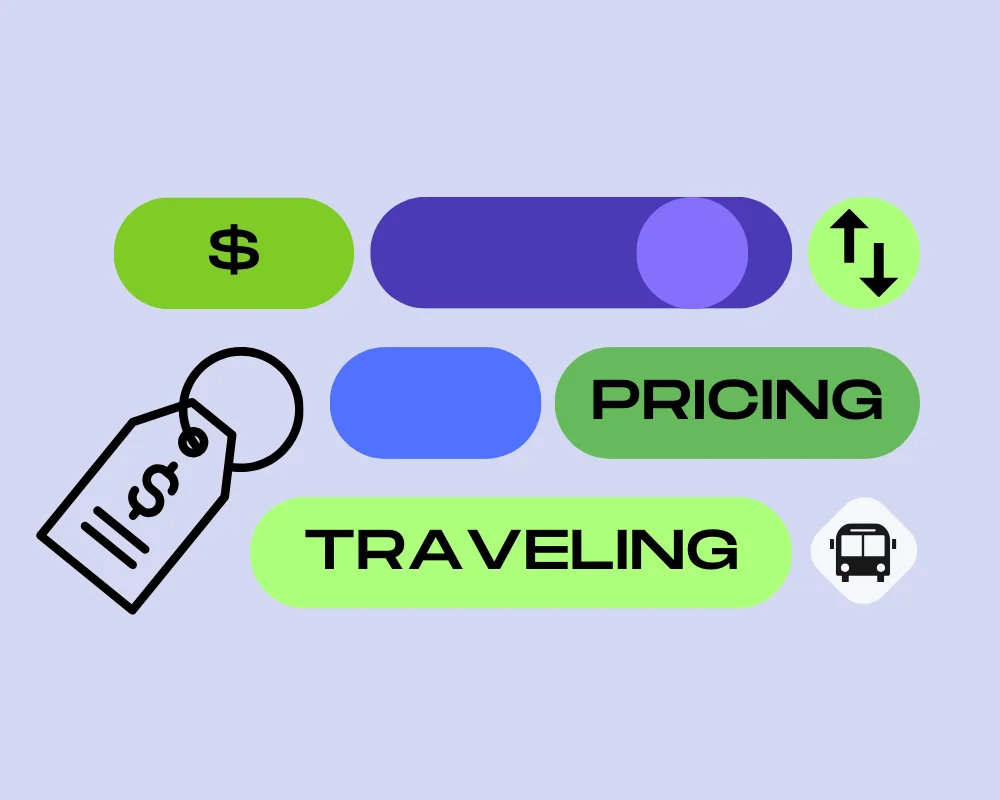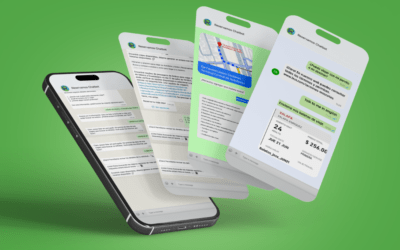In the digital era, pricing strategies have significantly evolved, giving way to more sophisticated and personalized approaches. Revenue Management has transformed industries such as tourism (airlines, hotels, and passenger ground transportation), as well as e-commerce (platforms like Amazon, for instance).
Unlike traditional promotions, which are typically temporary discounts applied to a broad customer segment, Revenue Management involves adjusting prices dynamically and in real-time. This practice allows companies to respond quickly to fluctuations in demand, competition, and other factors, aiming to optimize revenue. While promotions focus on driving immediate purchases, Revenue Management seeks to maximize long-term revenue through intelligent and continuous pricing strategies.
Airlines: Pioneers in Dynamic Pricing
Airlines are probably the pioneers of the dynamic pricing concept. Their pricing structure is highly sensitive to demand, seat availability, and booking timing. Many companies have refined their dynamic pricing models to maximize aircraft occupancy. As the departure date approaches and fewer seats remain available, prices tend to rise significantly. At the same time, last-minute promotions and discounts may appear to fill flights with low demand.
Dynamic Pricing Strategies in Airlines
- Booking Windows: Airlines often offer the lowest prices for bookings made well in advance or very close to the departure date.
- Basic vs. Flexible Fares: Basic fares are usually more economical but provide less flexibility in terms of changes or cancellations.
- Seat Pricing: Airlines can adjust seat prices based on their location in the aircraft, additional amenities, and demand.
Dynamic pricing allows airlines to fill their flights at the highest possible prices by quickly adapting to changes in demand and competition.
Transportation Services like Uber and DiDi
Mobility apps such as Uber and DiDi have led the adoption of dynamic pricing in the ground transportation sector. In these services, prices fluctuate based on factors like user demand, driver availability, time of day, and weather conditions. When demand is higher, prices automatically adjust upward: this strategy ensures that drivers are available during critical times, incentivizing their participation with higher fares.
Benefits for Drivers and Passengers
For users, mobility apps offer the flexibility to request a ride anytime, anywhere, while drivers enjoy the freedom to work at their convenience. This model has not only transformed the user experience but also optimized resource utilization. By dynamically adjusting fares, a more efficient distribution of vehicles is achieved, reducing passenger wait times and improving profitability for drivers.
The ability of dynamic pricing to quickly adapt to changes in demand is one of its greatest advantages. Whether due to special events, adverse weather conditions, or shifts in mobility patterns, transportation apps can adjust their fares in real time to ensure high-quality service. This flexibility is particularly crucial in cities with fluctuating transportation demand.
With technological advances, algorithms are expected to become increasingly sophisticated, enabling more accurate demand predictions and even more personalized fares. This progress will benefit both users and drivers while setting new standards in the transportation industry, consolidating these platforms as leaders in innovation and efficiency.
The Hotel Industry: Adaptability in Supply
The hotel sector has embraced Revenue Management and dynamic pricing to maximize occupancy and revenue. This strategy relies on analyzing large amounts of data to adjust room rates based on demand, local events, and holidays. It allows hotels to optimize last-minute sales or secure advance bookings at higher rates during peak demand periods.
What data is typically analyzed?
- Booking history: Check-in and check-out dates, room types, and prices paid.
- Market data: Information on competitors, seasonal demand trends, local events, and economic conditions.
- Demand predictions: Using statistical and machine learning models, hotels can forecast future demand and adjust prices accordingly.
Revenue Management Systems for Optimal Pricing
Hotels can use Revenue Management tools to create dynamic offers based on real-time customer behavior. For example, if a customer has visited the hotel’s website multiple times without making a reservation, they may receive a special offer to encourage booking.
Similarly, Revenue Management systems enable hotels to simulate different pricing and occupancy scenarios to evaluate the impact of pricing decisions.
The Role of OTAs in Pricing Strategies
Online Travel Agencies (OTAs) play a crucial role in the distribution of hotel rooms and significantly influence hotels’ pricing strategies. By centralizing much of the demand and increasing hotels’ visibility to consumers, these platforms have become indispensable for many establishments. However, their presence also creates significant challenges that hotels must address with well-crafted strategies.
Hotels compete for top positions in OTAs’ search results, often leading to price wars, where establishments lower their rates to stand out, thereby eroding profit margins. Adding to this is the rate parity policy that many OTAs enforce, requiring hotels to maintain the same prices on their websites as on third-party platforms, which limits their ability to offer incentives to direct bookers. Additionally, OTAs charge substantial commissions for each booking made through their platforms.
This combination of dependence, competition, and associated costs creates a complex scenario for hotels, where profitability depends on their ability to balance these pressures.
To counter the influence of OTAs, hotels must adopt diversified strategies to reduce their reliance on these intermediaries. This includes prioritizing direct sales channels, such as their own websites, by offering exclusive rates and additional benefits for direct bookings. Additionally, using revenue management tools becomes essential to dynamically adjust prices, optimize revenue, and stay competitive in a market that demands constant adaptation and innovation.
Amazon and Its Dynamic Pricing Strategies in eCommerce
Amazon has brought dynamic pricing to the world of eCommerce, using advanced algorithms to adjust product prices multiple times a day. This approach allows Amazon to remain competitive, optimize profit margins, and maintain its leadership in the global market.
How does it work?
- Real-time data analysis: Amazon collects vast amounts of data on inventory availability, product demand, consumer behavior, competitor prices, and market trends.
- Sophisticated algorithms: These algorithms process the data in real time to identify patterns and predict future demand.
- Price personalization: Amazon adjusts prices not only based on general market factors but also on each user’s purchase history, preferences, and willingness to pay.
- Dynamic competition: Amazon constantly monitors competitors’ prices and adjusts its own accordingly to maintain a competitive edge.

Implementation of Reservamos SaaS in the Bus Sector
The bus sector has not lagged behind in adopting dynamic pricing. Companies in this industry use Revenue Management systems, such as Reservamos SaaS, to manage the supply and demand for tickets.
Our Revenue Management System is a comprehensive solution that helps bus companies maximize their revenue through real-time optimized pricing strategies. By constantly monitoring the market, the system captures key data on competitors and passenger behavior, enabling it to generate highly accurate pricing alerts and suggestions. These recommendations are based on an analysis of sales history, occupancy rates, and demand, while also integrating data from competitors and OTAs to provide companies with a complete and up-to-date market overview.
One of the standout features is the Price Suggestion Module. This functionality adjusts fares based on an analysis of historical occupancy and competition data, thereby increasing revenue and optimizing the profitability of each trip. By offering more attractive prices during periods of low demand or raising fares when demand increases, transport companies have started managing their routes more efficiently and profitably.
The Revenue Management System from Reservamos SaaS becomes a powerful tool for bus companies to maintain a competitive edge, improving both profitability and the traveler experience with prices that accurately reflect market demand.
The Future of Dynamic Pricing
The evolution of dynamic pricing is driven by a constant quest for greater accuracy and profitability. Revenue Management Systems are increasingly incorporating more variables and data to gain a clearer picture of demand and optimize pricing strategies.
The future of dynamic pricing is becoming more sophisticated and personalized. Current trends indicate that it will continue to expand into new industries, as it not only serves as a way to increase revenue but also optimizes the customer experience by offering fair prices at the right time.
Dynamic pricing is more than just a pricing strategy; it is an advanced method of managing supply and demand in real time. From Uber to Amazon, the trend is here to stay, fueled by technology and access to vast amounts of data. In the passenger ground transportation industry, Reservamos SaaS is at the forefront of this evolution, offering dynamic pricing solutions that help our partners maximize their revenue and enhance the traveler experience.




